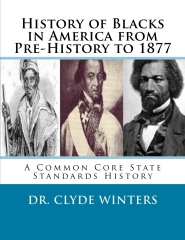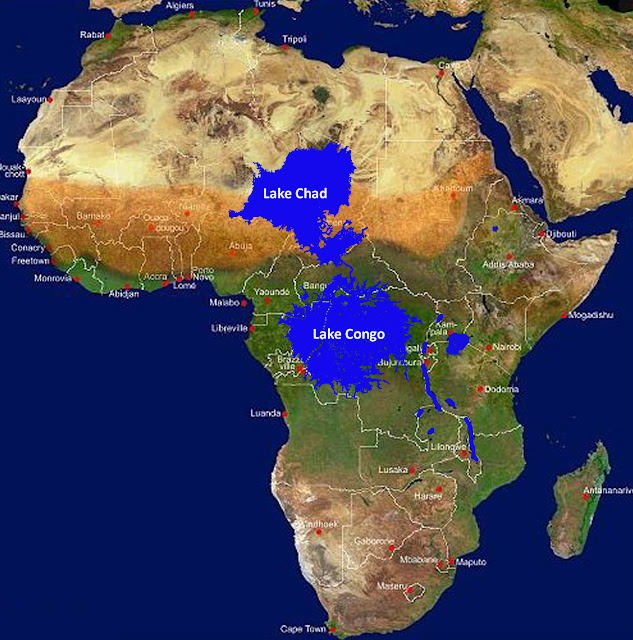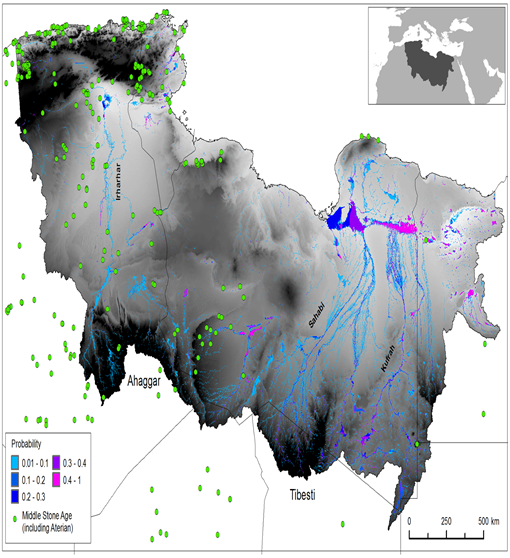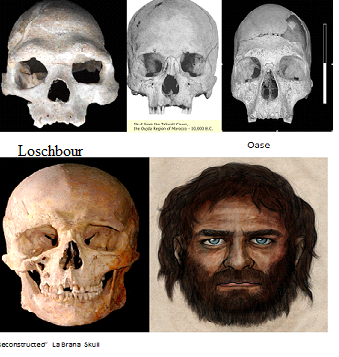B.B. Lal ("The Only Asian expedition in threatened Nubia:Work by an Indian Mission at Afyeh and Tumas", The Illustrated London Times , 20 April 1963) and Indian Egyptologist has shown conclusively that the Dravidians originated in the Saharan area 5000 years ago. He claims they came from Kush, in the Fertile African Crescent and were related to the C-Group people who founded the Kerma dynasty in the 3rd millennium B.C. (Lal 1963) The Dravidians used a common black-and-red pottery, which spread from Nubia, through modern Ethiopia, Arabia, Iran into India as a result of the Proto-Saharan dispersal.
B.B. Lal (1963) a leading Indian archaeologist in India has observed that the black and red ware (BRW) dating to the Kerma dynasty of Nubia, is related to the Dravidian megalithic pottery. Singh (1982) believes that this pottery radiated from Nubia to India. This pottery along with wavy-line pottery is associated with the Saharo-Sudanese pottery tradition of ancient Africa .
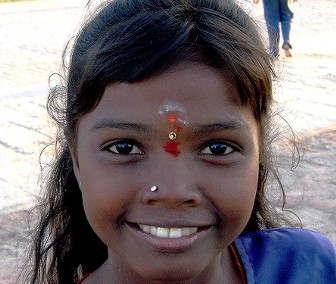
Aravaanan (1980) has written extensively on the African and Dravidian relations. He has illustrated that the Africans and Dravidian share many physical similarities including the dolichocephalic indexes (Aravaanan 1980,pp.62-263; Raceand History.com,2006), platyrrhine nasal index (Aravaanan 1980,pp.25-27), stature (31-32) and blood type (Aravaanan 1980,34-35; RaceandHistory.com,2006). Aravaanan (1980,p.40) also presented much evidence for analogous African and Dravidian cultural features including the chipping of incisor teeth and the use of the lost wax process to make bronze works of arts (Aravaanan 1980,p.41).
There are also similarities between the Dravidian and African religions. For example, both groups held a common interest in the cult of the Serpent and believed in a Supreme God, who lived in a place of peace and tranquility ( Thundy, p.87; J.T. Cornelius,"Are Dravidians Dynastic Egyptians", Trans. of the Archaeological Society of South India 1951-1957, pp.90-117; and U.P. Upadhyaya, "Dravidian and Negro-African", International Journal of Dravidian Linguistics 5, no.1
) .
![-]()
There are also affinities between the names of many gods including Amun/Amma and Murugan . Murugan the Dravidian god of the mountains parallels a common god in East Africa worshipped by 25 ethnic groups called Murungu, the god who resides in the mountains .
There is physical evidence which suggest an African origin for the Dravidians. The Dravidians live in South India. The Dravidian ethnic group includes the Tamil, Kurukh,Malayalam, Kananda (Kanarese), Tulu, Telugu and etc. Some researchers due to the genetic relationship between the Dravidians and Niger-Congo speaking groups they call the Indians the Sudroid (Indo-African) Race (RaceandHistory,2006).
Dravidian languages are predominately spoken in southern India and Sri Lanka. There are around 125 million Dravidian speakers. These languages are genetically related to African languages. The Dravidians are remnants of the ancient Black population who occupied most of ancient Asia and Europe.
The major grain exploited by Saharan populations was rice ,the yam and pennisetum. McIntosh and McIntosh (1988) has shown that the principal domesticate in the southern Sahara was bulrush millet. There has been considerable debate concerning the transport of African millets to India. Weber (1998) believes that African millets may have come to India by way of Arabia. Wigboldus (1996) on the other hand argues that African millets may have arrived from Africa via the Indian Ocean in Harappan times.
Both of these theories involve the transport of African millets from a country bordering on the Indian Ocean. Yet, Weber (1998) and Wigboldus (1996) were surprised to discover that African millets and bicolor sorghum , did not reach many East African countries until millennia after they had been exploited as a major subsistence crop at Harappan and Gujarat sites.
This failure to correlate the archaeological evidence of African millets in countries bordering on the Indian Ocean, and the antiquity of African millets in India suggest that African millets such as Pennisetum and Sorghum must have come to India from another part of Africa. To test this hypothesis we will compare Dravidian and African terms for millet.
Winters (1985) has suggested that the Proto-Dravidians formerly lived in the Sahara. This is an interesting theory, because it is in the Sahara that the earliest archaeological pennisetum has been found.
Millet impressions have been found on Mande ceramics from both Karkarchinkat in the Tilemsi Valley of Mali, and Dar Tichitt in Mauritania between 4000 and 3000 BP. (McIntosh & McIntosh 1983a,1988; Winters 1986b; Andah 1981)
Given the archaeological evidence for millets in the Sahara, leads to the corollary theory that if the Dravidians originated in Africa, they would share analogous terms for millet with African groups that formerly lived in the Sahara.
The linguistic and anthropological data make it clear that the Dravidian speaking people were part of the C-Group people who formed the backbone of the Niger-Congo speakers. It indicates that the Dravidians took there red-and-black pottery with them from Africa to India, and the cultivation of millet. The evidence makes it clear that the genetic evidence indicating a Holocene migration to India for the Dravidian speaking people is wrong. The Dravidian people given the evidence for the first cultivation of millet and red-and-black pottery is firmly dated and put these cultural elements in the Neolithic. The evidence makes it clear that genetic evidence can not be used to effectively document historic population movements.
There is mtDNA data uniting Africans and Dravidians.
Can Parallel Mutation and neutral genome selection explain Eastern African M1 consensus HVS-1 motifs in Indian M haplogroup
http://www.bioline.org.br/pdf?hg07022 Did the Dravidian Speakers Originate in Africa
http://academia.edu.documents.s3.amazonaws.com/1773184/PossibleDraOrigin.pdf Origin and Spread of Dravidian Speakers
http://www.krepublishers.com/02-Journals/IJHG/IJHG-08-0-000-000-2008-Web/IJHG-08-4-317-368-2008-Abst-PDF/IJHG-08-4-325-08-362-Winder-C/IJHG-08-4-325-08-362-Winder-C-Tt.pdf Sickle Cell Anemia in Africa and India
http://www.ispub.com/journal/the_internet_journal_of_hematology/volume_7_number_1_40/article/sickle-cell-anemia-in-india-and-africa.html Advantageous Alleles, Parallel Adaptation, Geographic Location and Sickle Cell Anemia among Africans and Dravidians
http://www.soeagra.com/abr/vol2/12.pdf Y-Chromosome evidence of African Origin of Dravidian Agriculture
http://www.academicjournals.org/ijgmb/PDF/pdf2010/Mar/Winters.pdf The most interesting fact about this evidence is that the Dravidian language is closely related to the Niger-Congo group. There are other linguistic groups that separate the Niger-Congo speakers from the Dravidians. The fact that they are genetically related indicates that the Dravidians recently came to India.
http://arutkural.tripod.com/tolcampus/drav-african.htm Linguistic Evidence
1.1 Many scholars have recognized the linguistic unity of Black African (BA) and Dravidian (Dr.) languages. These affinities are found not only in the modern African languages but also that of ancient Egypt. These scholars have made it clear that lexical, morphological and phonetic unity exist between African languages in West and North Africa as well as the Bantu group.
1.2 K.P. Arvaanan (1976) has noted that there are ten common elements shared by BA languages and the Dr. group. They are (1) simple set of five basic vowels with short-long consonants;(2) vowel harmony; (3) absence of initial clusters of consonants; (4) abundance of geminated consonants; (5) distinction of inclusive and exclusive pronouns in first person plural; (6) absence of degrees of comparison for adjectives and adverbs as distinct morphological categories; (7) consonant alternation on nominal increments noticed by different classes; (8)distinction of completed action among verbal paradigms as against specific tense distinction;(9) two separate sets of paradigms for declarative and negative forms of verbs; and (l0) use of reduplication for emphasis.

1.3 There has been a long development in the recognition of the linguistic unity of African and Dravidian languages. The first scholar to document this fact was the French linguist L. Homburger (1950,1951,1957,1964). Prof. Homburger who is best known for her research into African languages was convinced that the Dravidian languages explained the morphology of the Senegalese group particularly the Serere, Fulani group. She was also convinced that the kinship existed between Kannanda and the Bantu languages, and Telugu and the Mande group. Dr. L. Homburger is credited with the discovery for the first time of phonetic, morphological and lexical parallels between Bantu and Dravidians
1.6 By the 1970's numerous scholars had moved their investigation into links between Dr. and BA languages on into the Senegambia region. Such scholars as Cheikh T. N'Diaye (1972) a Senegalese linguist, and U.P. Upadhyaya (1973) of India , have proved conclusively Dr. Homburger's theory of unity between the Dravidian and the Senegalese languages.
1.7 C.T. N'Diaye, who studied Tamil in India, has identified nearly 500 cognates of Dravidian and the Senegalese languages. Upadhyaya (1973) after field work in Senegal discovered around 509 Dravidian and Senegambian words that show full or slight correspondence.
1.8 As a result of the linguistic evidence the Congolese linguist Th. Obenga suggested that there was an Indo-African group of related languages. To prove this point we will discuss the numerous examples of phonetic, morphological and lexical parallels between the Dravidian group: Tamil (Ta.), Malayalam (Mal.), Kannanda/Kanarese (Ka.), Tulu (Tu.), Kui-Gondi, Telugu (Tel.) and Brahui; and Black African languages: Manding (Man.),Egyptian (E.), and Senegalese (Sn.)
_________________________________________________________________
code:
COMMON INDO-AFRICAN TERMS
ENGLISH DRAVIDIAN SENEGALESE MANDING
MOTHER AMMA AMA,MEEN MA
FATHER APPAN,ABBA AMPA,BAABA BA
PREGNANCY BASARU BIIR BARA
SKIN URI NGURU,GURI GURU
BLOOD NETTARU DERET DYERI
KING MANNAN MAANSA,OMAAD MANSA
GRAND BIIRA BUUR BA
SALIVA TUPPAL TUUDDE TU
CULTIVATE BEY ,MBEY BE
BOAT KULAM GAAL KULU
FEATHER SOOGE SIIGE SI, SIGI
MOUNTAIN KUNRU TUUD KURU
ROCK KALLU XEER KULU
STREAM KOLLI KAL KOLI
6.1 Dravidian and Senegalese. Cheikh T. N'Diaye (1972) and U.P. Upadhyaya (1976) have firmly established the linguistic unity of the Dravidian and Senegalese languages. They present grammatical, morphological, phonetic and lexical parallels to prove their point.
6.2 In the Dravidian and Senegalese languages there is a tendency for the appearance of open syllables and the avoidance of non-identical consonant clusters. Accent is usually found on the initial syllable of a word in both these groups. Upadhyaya (1976) has recognized that there are many medial geminated consonants in Dravidian and Senegalese. Due to their preference for open syllables final consonants are rare in these languages.
6.3 There are numerous parallel participle and abstract noun suffixes in Dravidian and Senegalese. For example, the past participle in Fulani (F) -o, and oowo the agent formative, corresponds to Dravidian -a, -aya, e.g., F. windudo 'written', windoowo 'writer'.
6.4 The Wolof (W) -aay and Dyolo ay , abstract noun formative corresponds to Dravidian ay, W. baax 'good', baaxaay
'goodness'; Dr. apala 'friend', bapalay 'friendship'; Dr. hiri
'big', hirime 'greatness', and nal 'good', nanmay 'goodness'.
6.5 There is also analogy in the Wolof abstract noun formative suffix -it, -itt, and Dravidian ita, ta, e.g., W. dog 'to cut', dogit 'sharpness'; Dr. hari 'to cut', hanita 'sharp-ness'.
6.6 The Dravidian and Senegalese languages use reduplication of the bases to emphasize or modify the sense of the word, e.g., D. fan 'more', fanfan 'very much'; Dr. beega 'quick', beega 'very quick'.
6.7 Dravidian and Senegalese cognates.
code:
English Senegalese Dravidian
body W. yaram uru
head D. fuko,xoox kukk
hair W. kawar kavaram 'shoot'
eye D. kil kan, khan
mouth D. butum baayi, vaay
lip W. tun,F. tondu tuti
heart W. xol,S. xoor karalu
pup W. kuti kutti
sheep W. xar 'ram'
cow W. nag naku
hoe W. konki
bronze W. xanjar xancara
blacksmith W. kamara
skin dol tool
mother W. yaay aayi
child D. kunil kunnu, kuuci
ghee o-new ney
Above we provided linguistic examples from many different African Supersets (Families) including the Mande and Niger-Congo groups to prove the analogy between Dravidian and Black African languages. The evidence is clear that the Dravidian and Black African languages should be classed in a family called Indo-African as suggested by Th. Obenga. This data further supports the archaeological evidence accumulated by Dr. B.B Lal (1963) which proved that the Dravidians originated in the Fertile African Crescent.
Agricultural Evidence
One of the principal groups to use millet in Africa are the Northern Mande speaking people (Winters, 1986). The Norther Mande speakers are divided into the Soninke and Malinke-Bambara groups. Holl (1985,1989) believes that the founders of the Dhar Tichitt site where millet was cultivated in the 2nd millenium B.C., were northern Mande speakers.
To test this theory we will compare Dravidian and Black African agricultural terms, especially Northern Mande. The linguistic evidence suggest that the Proto-Dravidians belonged to an ancient sedentary culture which exitsed in Saharan Africa. We will call the ancestor of this group Paleo-Dravido-Africans.
The Dravidian terms for millet are listed in the Dravidian Etymological Dictionary at 2359, 4300 and 2671. A cursory review of the linguistic examples provided below from the Dravidian, Mande and Wolof languages show a close relationship between these language. These terms are outlined below:
code:
Kol sonna --- --- ----
Wolof (AF.) suna --- ---- ---
Malinke (AF) suna bara, baga de-n, doro koro
Tamil connal varaga tinai kural
Malayalam colam varaku tina ---
Kannanda --- baraga, baragu tene korale,korle
*sona *baraga *tenä *kora
It is clear that the Dravidian and African terms for millet are very similar. The Proto-Dravidian terms *baraga and *tena have little if any affinity to the African terms for millet.
The Kol term for millet `sonna', is very similar to the terms for millet used by the Wolof `suna' ( a West Atlantic Language), and Mande `suna' (a Mande language). The agreement of these terms in sound structure suggest that these terms may be related.
The sound change of the initial /s/ in the African languages , to the /c/ in Tamil and Malayalam is consistent with the cognate Tamil and Malayalam terms compared by Aranavan(1979 ,1980;) and Winters ( 1981, 1994). Moreover, the difference in the Kol term ` soona',which does retain the complete African form indicates that the development in Tamil and Malayalam of c < s, was a natural evolutionary development in some South Dravidian languages. Moreover, you will also find a similar pattern for other Malinke and Dravidian cognates, e.g., buy: Malinke `sa, Tamil cel; and road: Malinke `sila', Tamil `caalai'.
African Millets Carried to India by Dravidian Speakers
http://aob.oxfordjournals.org/letters/
Dravidians in Sri Lanka
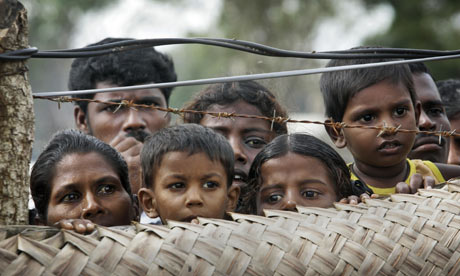
Videos on the African origin of Dravidian speakers:
http://www.youtube.com/watch?v=IcC6WoUgHdU
http://www.youtube.com/watch?v=xeKj-toC3Uc
http://www.youtube.com/watch?v=f5jta98KRKY
